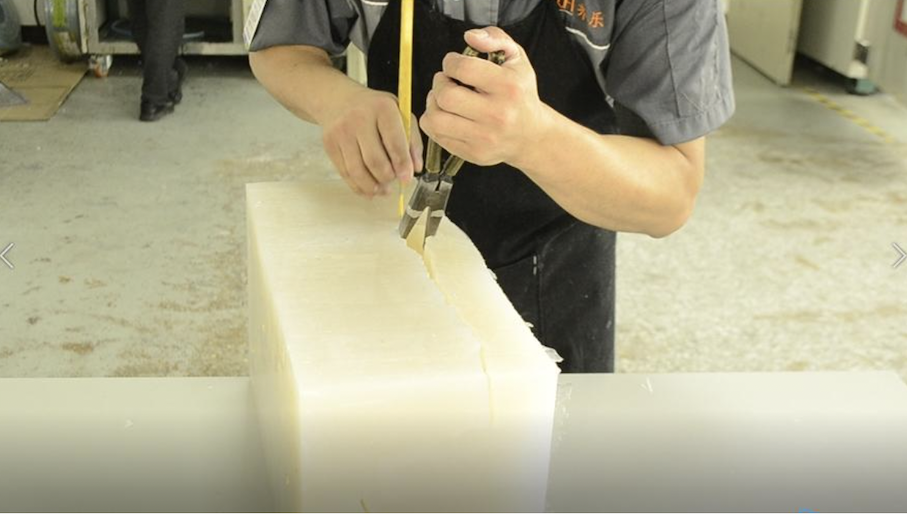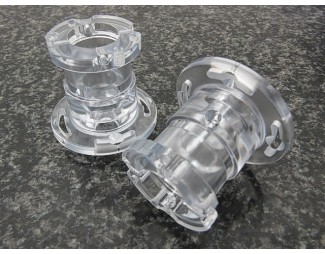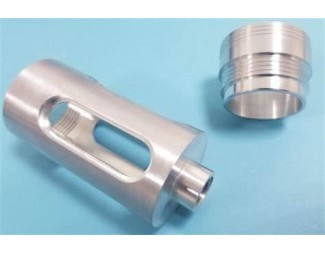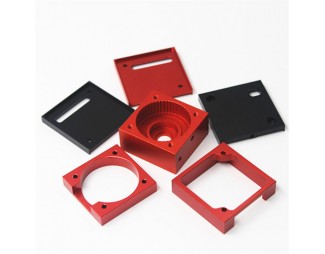High Quality Vacuum Casting China Company
Introduction: The Critical Role of Vacuum Casting in Modern Manufacturing
Vacuum casting, a process that combines silicone mold creation with polyurethane resin casting under vacuum conditions, has become indispensable for industries requiring high-precision prototypes, low-volume production, and complex geometries. Leading companies in China, such as HLH Prototypes, are recognized as top vacuum casting service providers globally. China, responsible for 40% of global rapid prototyping output, dominates this sector, with top vacuum casting companies like vacuum casting company ABC Rapid leading the charge in quality, speed, and cost-efficiency, and earning a reputation for quality and innovation. ABC Rapid's focus is on delivering high-quality vacuum casting services for cast prototypes and low-volume production. The vacuum cast process enables the creation of detailed, production-like prototypes efficiently. This article explores the technology’s applications, industry trends, and why ABC Rapid stands out as China’s premier vacuum casting partner.Key Advantages of Vacuum Casting Technology
1. Precision and Detail Reproduction- Resolution: Captures features as fine as 0.1mm, ideal for microfluidic devices, dental models, and intricate automotive components.
- Surface Finish: Achieves textures ranging from matte to high-gloss (Ra ≤ 0.8μm) without post-processing.
- Identical Parts: Vacuum casting enables the production of identical parts with consistent quality across a parts massive range, from small components like headphones to large items such as car bumpers.
- Tips Vacuum Casting: For best results, follow design tips vacuum casting, such as ensuring a good fit and maintaining appropriate wall thickness to achieve successful reproductions.
2. Material Versatility
- Polyurethane Resins: Mimic ABS, PP, PC, and rubber-like Shore hardness (30A–85D).
- PU Material: PU material is commonly used in vacuum casting, allowing for efficient production of multiple prototypes.
- Specialty Materials: Flame-retardant (UL94 V-0), FDA-compliant, and glass-fiber-reinforced options.
- Materials Allowing: The process supports a wide variety of materials allowing for the creation of identical parts across a parts massive range, making it suitable for diverse applications.
3. Cost-Effective Low-Volume Production
- Mold Lifespan: Silicone molds endure 15–30 cycles, perfect for batches of 10–500 units.
- Lead Time: 3–7 days for prototypes vs. weeks for traditional tooling.
- Low Cost: Vacuum casting offers a low-cost solution for prototyping and small batch runs, making it more affordable than traditional manufacturing methods.
- Rapid Iterations: The process supports rapid iterations, allowing for quick design refinement and testing before full-scale production.
4. Sustainability
- Low Waste: Vacuum degassing reduces material bubbles and rejects by 25%.
- Reusable Molds: Silicone recycling programs cut landfill waste by 50%.
Process Note: Each step in the vacuum casting process must be performed carefully to ensure high-quality outcomes.
Industries Transformed by Vacuum Casting
1. Automotive & Aerospace- Applications: Air vent grilles, dashboard buttons, drone housings.
- Case Study: ABC Rapid’s experienced engineering team and skilled engineers developed and delivered 5,000 heat-resistant sensor housings for EV battery systems using glass-filled PU resin (180°C rating), showcasing our in-house capabilities for design, prototyping, and validation.
2. Medical Devices
- Compliance: ISO 13485-certified parts for surgical tools, prosthetics, and drug delivery devices.
- Biocompatibility: USP Class VI and ISO 10993-5 compliant resins.
- Our team’s expertise in delivering high-quality prototypes enables rapid development cycles, while in house testing with vacuum casting allows for quick validation of medical device designs.
- Our engineering team ensures efficient delivery of prototypes and finished parts to meet tight project timelines.
3. Consumer Electronics
- Wearables: Waterproof smartwatch cases (IP68 rating) with integrated soft-touch grips.
- IoT Devices: Antenna housings with precise RF shielding properties.
4. Industrial Equipment
- Custom Gaskets & Seals: Oil-resistant PU parts for machinery maintenance.
- Jigs & Fixtures: Lightweight CNC machining aids.
- In-house capabilities and in house testing enable our team to rapidly produce and validate custom industrial components, delivering reliable solutions for complex manufacturing needs.
Specialized Services: Urethane Casting for Precision Parts
Urethane casting, often referred to as vacuum casting, is a specialized service designed for producing high-quality, precision parts with intricate geometries and detailed designs. The process begins with the creation of a master model, which serves as the template for a silicone mold. This mold enables manufacturers to create multiple reproductions of a part, making it ideal for low volume production and rapid prototyping.
With urethane casting, companies can quickly recreate tens of rubber parts, plastic parts, or other components that require specific characteristics such as unique textures, custom colors, or tailored material properties. The flexibility of the silicone mold allows for the production of parts that closely mimic the final product, supporting functional testing and market testing before committing to full-scale production.
This method is particularly valuable for businesses looking to navigate efficiently through the product development process. By enabling the creation of multiple reproductions in production-like materials, urethane casting supports iterative design, functional validation, and the ability to respond rapidly to market feedback. Whether you need rubber components for functional testing or plastic parts for display models, urethane casting delivers the quality and versatility required for today’s fast-paced markets.
Integrating CNC Machining and Manufacturing with Vacuum Casting
Combining CNC machining with vacuum casting unlocks new possibilities for creating high quality prototypes and end-use parts with complex geometries. This integrated approach starts with CNC machining to produce a master model with high precision and detailed information, which is then used to form a silicone mold for the vacuum casting process.
By leveraging both technologies, manufacturers can achieve rapid prototyping and low volume production of components with a massive range of materials, including plastics, metals, and rubbers. This flexibility allows for the creation of parts with specific characteristics and functions tailored to the needs of various industries, from automotive to medical devices.
The synergy between CNC machining and vacuum casting not only ensures high precision and quality but also reduces lead time and costs compared to traditional methods like injection molding. Companies benefit from the ability to quickly iterate designs, produce small batch parts, and transition seamlessly from prototypes to end use parts. This approach is ideal for projects that demand a wide range of materials, high performance, and detailed engineering requirements.
Injection Molding and Production Synergies
Vacuum casting and injection molding each offer unique advantages, and when used together, they provide a powerful solution for creating high-quality parts with complex designs. Vacuum casting excels in low volume production and prototyping, allowing companies to test and refine their designs using a wide range of materials and characteristics before moving to mass production.
Once a design is validated through vacuum casting, companies can transition to injection molding for high-volume production. This synergy reduces the risk of costly design changes and tooling modifications, as any necessary adjustments can be made during the prototyping phase. The combination of these technologies enables the efficient creation of parts with specific textures, colors, and material properties, whether for plastic, metal, or rubber components.
By integrating vacuum casting and injection molding, businesses can navigate efficiently through the entire product development process—from initial prototyping to full-scale production. This approach minimizes lead time, lowers costs, and ensures that the final products meet the highest standards of quality and performance, making it a smart choice for companies seeking to stay competitive in today’s fast-moving markets.
ABC Rapid: China's Premier Vacuum Casting Company
Founded in 2010, ABC Rapid has grown into a global leader, serving clients like Siemens, Medtronic, and Xiaomi. Here's why they dominate the vacuum casting market:1. Cutting-Edge Facilities
- Production Capacity: 10,000+ parts monthly across 3 ISO 9001-certified factories.
- Advanced Equipment:
- Vacuum Chambers: 20+ machines with 0.1mbar vacuum precision.
- Post-Curing Ovens: Uniform heat distribution for stress-free parts.
2. Unmatched Technical Expertise
- Material Library: 200+ resin formulations, including EMI-shielding and optically clear grades.
- Hybrid Solutions: Combine vacuum casting with CNC machining for metal-insert components.
3. Quality Assurance
- Inspection Tools: CMM, CT scanning, and tensile testers for dimensional and mechanical validation.
- Certifications: IATF 16949 (automotive), ISO 14001 (environmental), and FDA audits.
4. Sustainability Initiatives
- Closed-Loop Cooling Systems: Reduce water usage by 70%.
- Bio-Based Resins: 30% plant-derived PU materials for carbon-neutral projects.
5. Client Success Story
ABC Rapid partnered with a German robotics firm to create 500 shock-absorbing drone mounts using custom-tuned PU (Shore 60A). The project reduced weight by 40% vs. aluminum and cut costs by 65%.
How to Choose a Reliable Vacuum Casting Factory in China
1. Evaluate Technical Capabilities- Verify expertise in thin-wall casting (<1mm), overmolding, and multi-material bonding.
2. Assess Industry Experience
- Prioritize factories with proven track records in your sector (e.g., medical, automotive).
3. Demand Transparency
- Request material certifications, mold flow analysis reports, and DFM feedback.
4. Scalability Testing
- Ensure seamless transition from prototyping to mid-volume production (100–10,000 units).
Future Trends in Vacuum Casting
- AI-Optimized Molding: Machine learning predicts resin flow patterns to eliminate defects.- 3D-Printed Hybrid Molds: Combine SLA-printed cores with silicone for complex undercuts.
- Smart Resins: Embedded sensors for real-time strain/temperature monitoring.
Conclusion: ABC Rapid - Your Partner in Precision Manufacturing
For businesses seeking a vacuum casting China factory that balances innovation, quality, and sustainability, ABC Rapid delivers unparalleled expertise. Their end-to-end solutions empower industries to accelerate product development, reduce costs, and meet stringent global standards. Connect with ABC Rapid: Visit https://www.abcrapid.com/ to request quotes, review case studies.

Search
Recent Post













